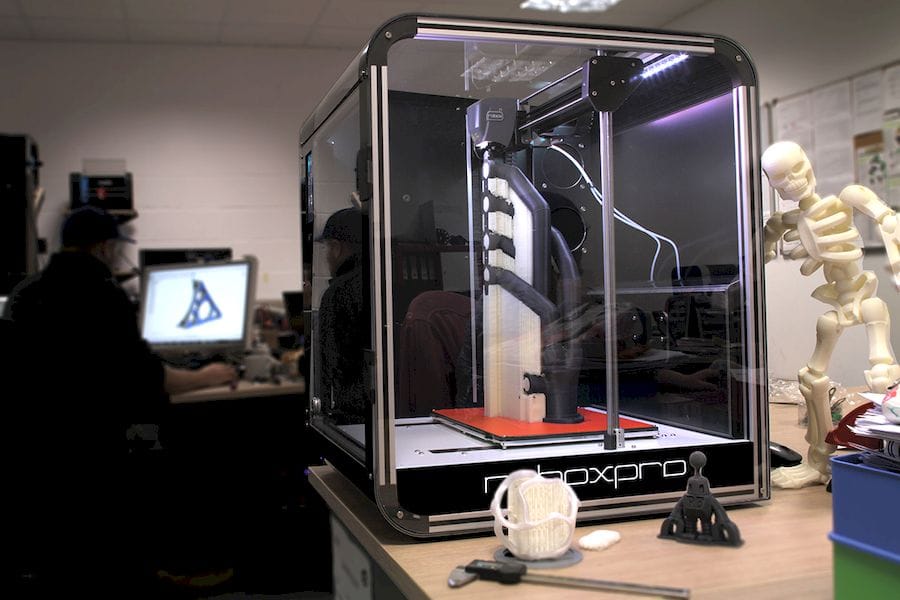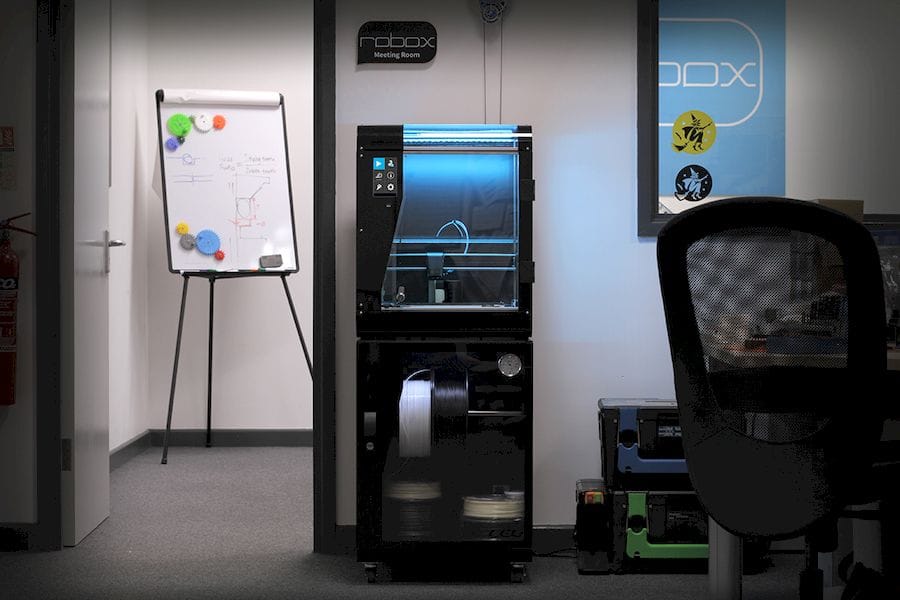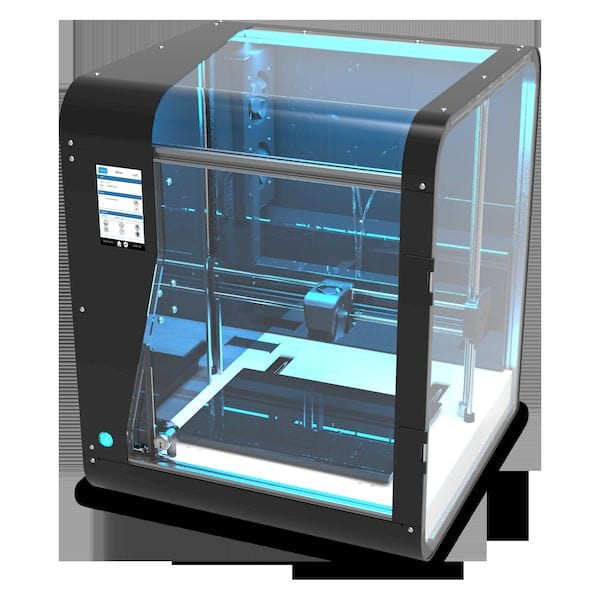
CEL has been marketing the Robox series of desktop 3D printers for years, and now the latest is announced: the RoboxPRO.
The UK company has produced notable 3D printers that include features not seen on other equipment, including an unusual “needle valve” solution to the retraction problem.
This and other features resulted in a desktop 3D printer that provided highly reliable service and quality prints. Though not one of the major players unit-wise, CEL’s equipment is highly regarded. I’ve yet to meet a Robox operator that doesn’t like their machine.

Now the company has moved up a few steps with the introduction of the RoboxPRO. There’s a clue in the naming of this model: “PRO”. It signifies that CEL is attempting to directly address the professional 3D printing market that has arisen over the past two years. They face significant competition, however, from many other desktop 3D printer manufacturers who also seek to exploit this same market.
So how does the RoboxPRO fare?
While the RoboxPRO obviously inherits many of the characteristics of CEL’s previous models, including the RoboxDual dual extrusion model, the company seems to have included a number of features directly addressing the professional market:
- A much larger build volume, now at a rather tall 210 x 300 x 400mm size. This enables professionals to build larger models, something that seems to be an emerging requirement for the market.
- Integrated WiFi and a web-based interface and notifications are now included, making the RoboxPRO more easily used in a professional workgroup.
- A flexible, magnetically-attached build plate will ease the work of removing completed prints, and will also enable quick swaps in an office setting for near-continuous 3D printing.
- A touchscreen interface will be more familiar in office settings as well.
- The enclosed build chamber is now equipped with a HEPA/Carbon filtration system to eliminate unpleasant 3D printing aromas in the workplace.
- Finally, a key-locking door is featured. This will enable workgroup control over prints, which could be particularly important for projects requiring some level of security.
- The toolhead features the Olsson Ruby nozzle, enabling 3D printing of highly abrasive materials that would rapidly corrupt the more common brass nozzles.
- An optional, but desirable feature is the dry box that can contain and directly feed moisture-free filament to the 3D printer.

Add up all these new features, along with the standard Robox elements, and you have a recipe for a very reliable, high quality desktop unit that should be more than suitable for use in professional offices.
The pricing of the machine is not insignificant, however, at the oddly mystical £3,333 level (USD$4,650). There are certainly desktop 3D printers at a lower price point, but likely none with the same quality as one might obtain from the CEL RoboxPRO.
Via CEL

